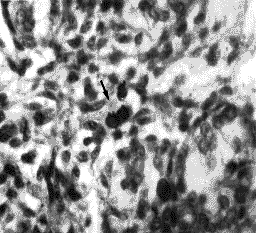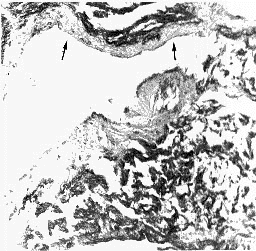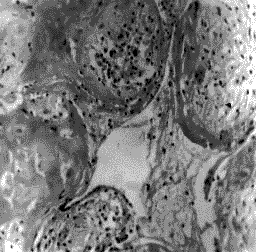In view of the scarce references concerning the histological data in congenital parvovirus human B19 infection, we intend to provide a description of the pathological features observed in six autopsies.The virus was detected by DNA hybridization (ISH-DBH),PCR and electronmicroscopy (EM) in paraffin-embedded feto-placentary tissues.These cases constitute a subset from 86 Non Immunologic Hydrops Fetalis (NIHF) cases, in which a systemic complex of inflammatory/degenerative lesions of unknown etiology was visualized by optical microscopy. In one case a syphilitic process was detected, typefying a double infection. All fetuses showed a similar pathology - hydrops, hepato-splenomegaly, lung hypoplasia and erythroblastemia, the specific histological feature being the presence of intranuclear inclusions in the erythroid progenitors, in the erythropoietic visceral tissue and in blood marrow. Complex cardiopathy allied to abnormal lung lobulation and polisplenia were observed once; in 2 cases endocardial fibroelastosis was diagnosed. The pulmonary lesions were represented by dysmaturity allied to interstitial mononuclear infiltration. The hepatic consisted of cholestasis, portal fibrosis, canalicular proliferation, hemossiderosis, focal necroses and giant cell transformation. The central nervous system lesions were predominantly anoxic although the autolysis impaired a correct diagnosis.
Non immunologic hydrops fetalis; Intrauterin infection; Human parvovirus B19; Morphological study; Virus detection









